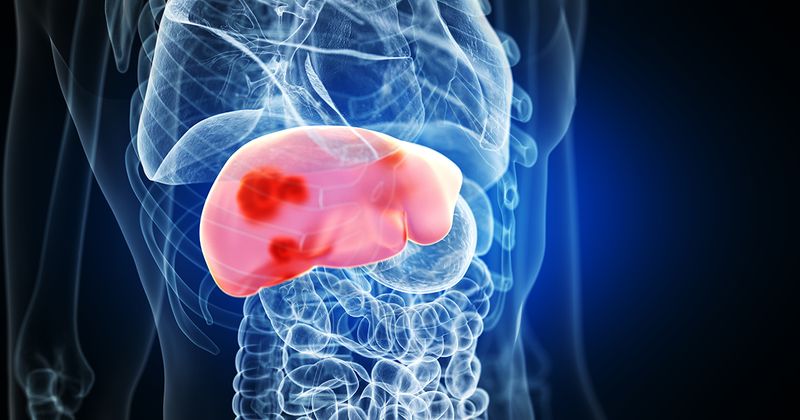The Liver Meeting: Hepatitis in children, NASH, ‘alarming’ disparities in mortality
The Liver Meeting 2022 delivered the latest research and developments on a variety of topics, including acute hepatitis in children, treatment for hepatitis-related cirrhosis and liver disease mortality during the COVID-19 pandemic.
Here are the top stories from this year’s meeting:

No ‘singular definitive etiology’ found for acute hepatitis outbreak in children
Although adenovirus infection has been widely implicated in an outbreak of acute, severe hepatitis in children, data presented found no “singular definitive etiology” for these cases.
“Beginning in October 2021, there were multiple clusters identified across the world of young children having a severe acute hepatitis and liver failure,” Rohit Kohli, MD, division chief of gastroenterology at the Children’s Hospital Los Angeles, University of Southern California, said. “Some, unfortunately, progressed to liver failure, needing liver transplantation or death, and at that time, there were alarm bells ringing at the CDC and WHO. However, beyond these local reports, we didn’t understand completely what was going on as a community.” Read more.
Efruxifermin induces NASH resolution, improves fibrosis by at least 1 stage vs. placebo
Efruxifermin improved liver histology, liver fat content and noninvasive markers of disease in patients with stage 2 or 3 fibrosis related to nonalcoholic steatohepatitis, according to late-breaking data.
In a previous phase 2a study, efruxifermin (EFX), a long-acting FGF21 analog, reduced liver fat content in patients with stage F1 to F3 NASH and improved noninvasive markers of liver inflammation, injury, fibrosis, glucose and lipid metabolism, Stephen A. Harrison, MD, FAASLD, medical director for Pinnacle Clinical Research and president of Summit Clinical Research in San Antonio, told attendees. Read more.
Prednisone bests anakinra, zinc for 90-day survival in severe alcohol-related hepatitis
Prednisone induced a higher 90-day survival rate and lower incidence of acute kidney injury compared with anakinra and zinc sulfate in patients with severe alcohol-associated hepatitis, according to late-breaking data.
“Alcohol-associated hepatitis (AH) is an acute clinical syndrome resulting from heavy and sustained alcohol consumption. Severe AH has a 90-day mortality rate of up to 30%, and treatment with corticosteroids improved 30- but not 90-day survival,” Samer Gawrieh, MD, associate professor of medicine at Indiana University School of Medicine and gastroenterology specialist at IU Health Physicians & Digestive Disorders, said. “Anakinra, an IL-1 inhibitor, reduced alcohol-induced hepatic steatosis, alanine transaminase and inflammatory cytokines in a mouse model of AH, and it also demonstrated efficacy signals in phase 2 study, but there are no large trials comparing anakinra to standard of care.” Read more.
Bulevirtide maintains safety, efficacy in HDV-related compensated cirrhosis at 72 weeks
Bulevirtide monotherapy was safe and effective at 72 weeks for patients with hepatitis D virus-related compensated cirrhosis, with virological and clinical responses increasing over time, according to data presented.
“Until now, administration of pegylated interferon has represented the only therapeutic option [for chronic hepatitis D] but was characterized by suboptimal viral response and significant side effects,” Elisabetta Degasperi, MD, PhD, of the division of gastroenterology and hepatology at the Foundation IRCCS Ca' Granda Ospedale Maggiore Policlinico in Milan, told attendees. “Bulevirtide has shown promising results in phase two and phase three studies so that EMA approval was granted in July 2020, for treatment of compensated chronic hepatitis delta.” Read more.
‘Alarming’ age, racial disparities seen in liver disease-related mortality during pandemic
Age-standardized mortality rates for alcohol-associated liver disease and nonalcoholic fatty liver disease increased the most among the young and non-Hispanic whites, Blacks and Native Americans during the COVID-19 pandemic.
“During the pandemic, we saw several significant phenomena,” Yee Hui Yeo, MD, an internal medical resident at Cedars-Sinai Medical Center, said during a media briefing, including an “increased mortality rate for alcohol use-related disease and nonalcoholic fatty liver disease.” Read more.
PLX065 reduces liver fat content, prevents worsening of fibrosis in NASH
PXL065, a novel PPAR gamma-sparing chemical entity of pioglitazone, reduced liver fat content with no dose-dependent effect on weight gain in patients with nonalcoholic steatohepatitis, according to late-breaking data.
“Pioglitazone has been extensively studied for many years. ... There have been at least six biopsy trials of varying durations, varying numbers of patients included in the trial, each showing histopathological and biochemical benefit,” Stephen A. Harrison, MD, FAASLD, medical director for Pinnacle Clinical Research and president of Summit Clinical Research in San Antonio, said. Read more.
High Z polymer levels linked to fibrosis, inflammation in alpha 1 antitrypsin deficiency
Elevated Z polymer levels may predict lung and liver disease activity in patients with alpha 1 antitrypsin deficiency, according to a presenter.
“Homozygous ZZ alpha 1 antitrypsin deficiency, or AATD, is a common genetic metabolic disorder affecting adults and children,” Anandini Suri, MD, a GI fellow at Saint Louis University and SSM Health Cardinal Glennon Children’s Hospital, said. “Clinical manifestations of this disease are highly variable. The exact burden of liver disease in adulthood is not well understood and predictors and biomarkers of severe disease are still being identified.” Read more.

